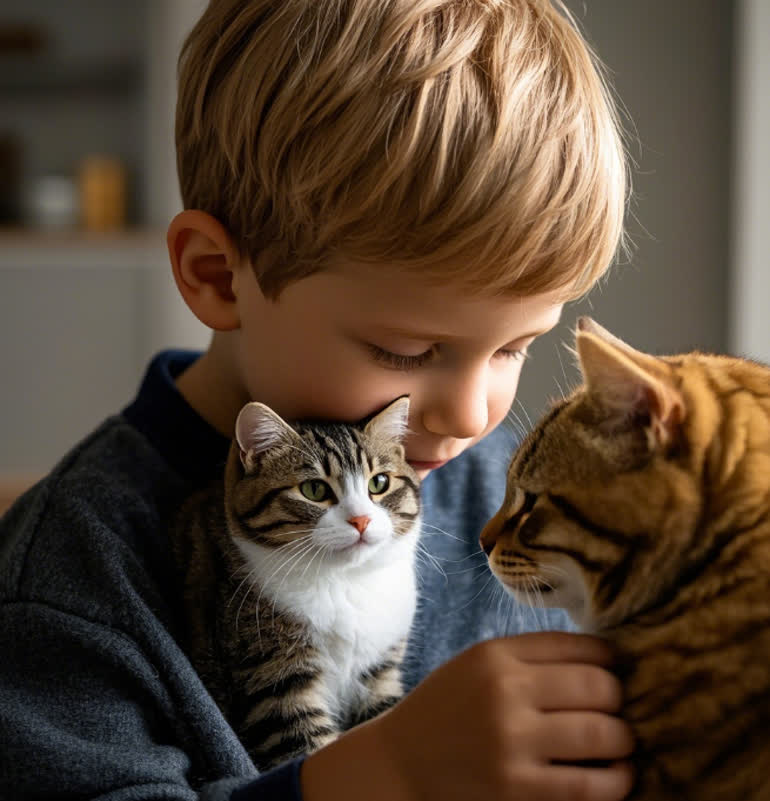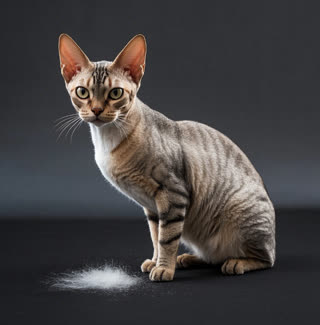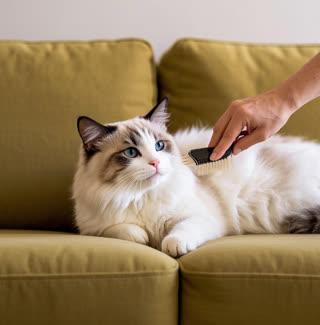Have you ever wondered why your cat allows you to stroke their chin, sleep beside you, or even pick them up? While cats are often labeled as aloof or independent, these seemingly passive behaviors are actually profound signs of trust. When a cat permits you to interact with them in specific ways, they’re communicating far more than meets the eye. In this guide, we’ll decode the hidden language of feline trust, exploring why cats let you do “that” and how to nurture this bond.
Cats are creatures of routine and control. Their willingness to let humans handle them, enter their space, or engage in intimacy hinges on a deep sense of security. Unlike dogs, which may comply out of obedience, cats grant permission selectively. When a cat allows you to touch their belly, knead your lap, or greet them with a nose boop, they’re signaling: “I trust you not to harm me.”
Understanding this trust requires recognizing that cats view humans as part of their social hierarchy—sometimes as companions, protectors, or even pseudo-family members. By respecting their boundaries and interpreting their signals, you can strengthen this bond and create a harmonious relationship.
A slow, deliberate blink from your cat is often described as a “kitty kiss.” This behavior indicates relaxation and trust. When a cat feels safe, they’ll lower their guard and expose their vulnerable eyes. To reciprocate, try blinking slowly back—it’s a surefire way to melt their heart.
Exposing their belly is a bold move for cats, as it leaves their vital organs unprotected. While many owners interpret this as an invitation to rub, most cats tolerate belly touches only from trusted humans. However, even then, they may tense up or swat if overwhelmed. Always let your cat initiate physical contact and stop at the first sign of discomfort.
Kneading—pawing at surfaces with rhythmic motions—is a relic of kittenhood, when cats massaged their mother’s belly to stimulate milk flow. When an adult cat kneads you, they’re seeking comfort and signaling trust. This behavior often coincides with purring and relaxed body language.
Cats have scent glands in their cheeks, chin, and paws. When they rub against you, they’re depositing pheromones to claim you as “theirs.” This isn’t dominance—it’s a sign of affection and familiarity. Consider it a feline stamp of approval.
Choosing to nap beside you (or even on you) is a testament to trust. Cats are most vulnerable while sleeping, so sharing this intimate moment means they view you as a safe haven. If your cat curls up on your lap or pillow, cherish it—they’re letting their guard down entirely.
While cats meow primarily to communicate with humans, a soft, trilling meow often signals contentment. If your cat “talks” to you while rubbing against your legs or following you around, they’re expressing trust and seeking connection.
Cats are masters of subtlety, and their body language is a roadmap to their comfort levels. Ignoring their signals can erode trust and lead to defensive behaviors like hissing or scratching. Here’s how to respect their boundaries:
Read the Room: Dilated pupils, flattened ears, or a twitching tail indicate stress. If your cat avoids eye contact or moves away, give them space.
Let Them Initiate: Wait for your cat to approach you for pets or cuddles. Forcing interaction can backfire.
Stop at the First Signal: If your cat stiffens, licks their lips, or gently bats your hand, it’s time to pause. Honor their “no” to build mutual respect.
Myth 1: All cats crave constant attention.
While some breeds (like Siamese or Ragdolls) are social, many cats prefer periodic alone time. Trust isn’t about quantity of interaction but quality.
Myth 2: A cat rubbing furniture is angry.
Scratching and rubbing are natural ways for cats to mark territory and stretch muscles. Provide scratching posts to redirect this behavior and avoid punishment.
Myth 3: Cats can’t be trained.
Cats respond to positive reinforcement, such as treats or praise. Training them to accept handling (e.g., nail clipping) through gradual desensitization builds trust over time.
Establish a Routine: Cats thrive on predictability. Feed them at the same time daily and create a consistent play schedule.
Offer Choices: Let your cat decide where to sleep, which toy to play with, or when to interact. This empowers them and reduces stress.
Use Positive Reinforcement: Reward calm behavior with treats or affection. For example, praise your cat when they approach you voluntarily.
Create Safe Spaces: Provide hiding spots (e.g., cat trees or cozy boxes) where your cat can retreat when overwhelmed.
Respect Their Autonomy: Avoid forcing your cat into uncomfortable situations, like loud gatherings or excessive handling.
When a cat allows you to stroke their belly, sleep by your side, or handle them during vet visits, they’re not just tolerating you—they’re actively choosing trust. By understanding their signals and respecting their boundaries, you’ll unlock a deeper connection that benefits both of you. Remember: A cat’s trust is earned, not demanded. So the next time your feline friend curls up in your lap, take it as the highest compliment—a silent affirmation that you’ve become their confidant, protector, and forever companion.










